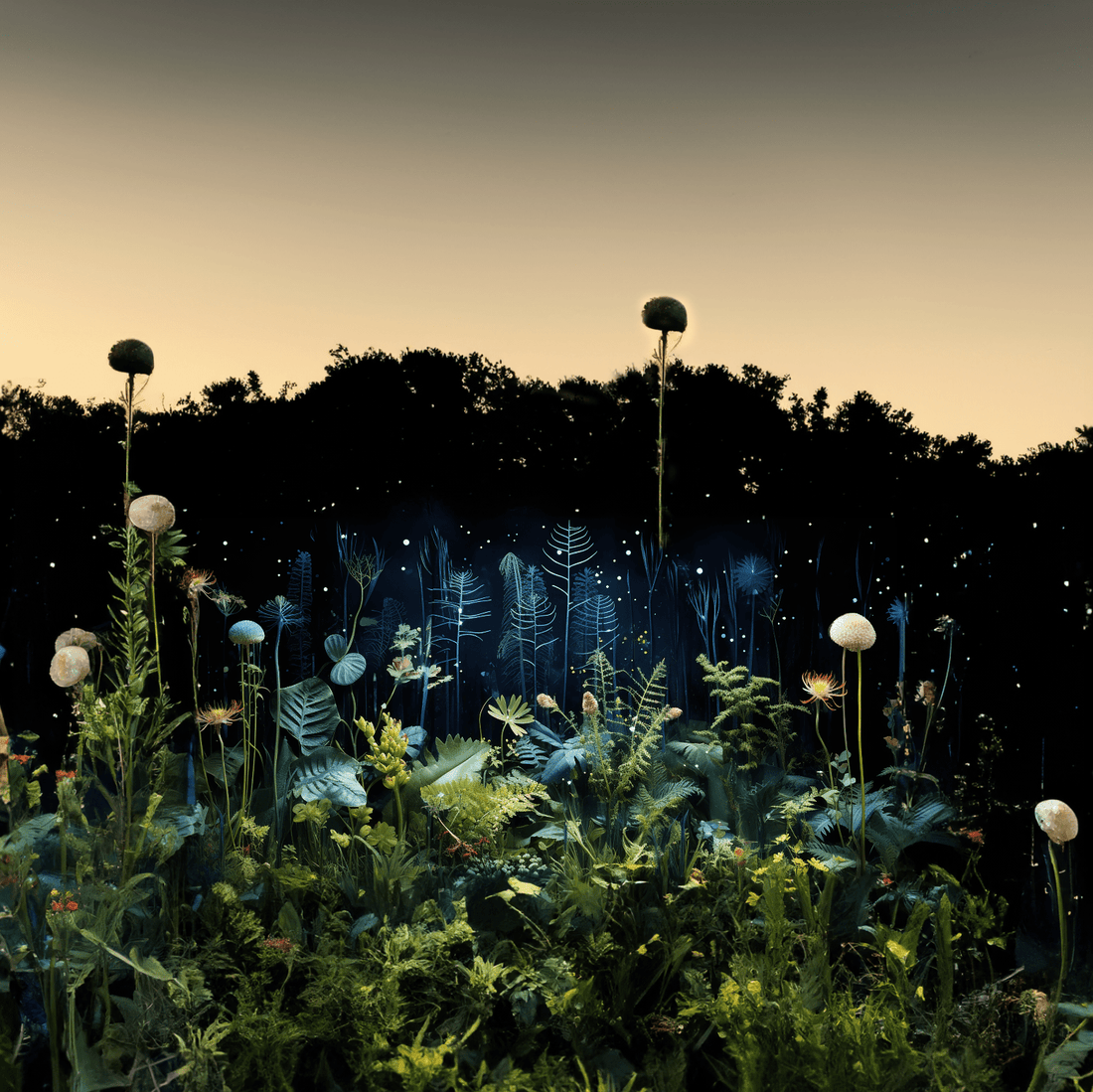As an artist, I’ve always been drawn to the way nature and human intervention coexist in delicate, constructive, and destructive ways. Night Gardens, my recent exhibition at Robert Mann Gallery, delves into this delicate balance. The show is a personal meditation on the earth, its complex ecosystems, and transformation. It’s a space where the material world intersects with the ephemeral: where light, growth, life, death, and decay exist in perpetual flux.

Moonfield (above) contains abstracted representations of Alyssum Murale and meadowsweet. Meadowsweet is the plant I believe Ana Mendieta was laying down in, in the Silueta series. In Irish myth, Meadowsweet is used to treat rage. Alyssum Murale is a tall yellow flower known for its hyperaccumulation properties related to nickel, and is often found in industrial sites where the ground has been disturbed.
Vince Aletti, in his thoughtful review of the exhibition at Robert Mann Gallery for The New Yorker, captured the swirling excitement, even the madness, of what I was trying to convey.
He wrote:
“Mary Mattingly’s photographs of moonlit gardens turn the Robert Mann gallery into a hallucinatory hothouse. Vivid and wild with masses of real, handmade, and computer-generated flowers, Mattingly’s compact landscapes are at once otherworldly—sci-fi at its most seductive—and as familiar as natural-history dioramas. But they’re not just pretty pictures. The artist has long been known for work (including site-specific sculpture) that takes on environmental issues with engaging subtlety. Here, the gardens often appear to be sinking or submerged as rising seas threaten to turn earthly Edens into swampland. In one image, translucent, jewel-like jellyfish caps float like a squadron of U.F.O.s above a darkened field of flowers, invaders from our own mutating planet.”
This description resonates with what I was trying to convey: an otherworldly feeling, where the garden, though familiar, is transformed. The garden becomes a place of refuge and a place of potential peril, one where nature’s power is both alluring and dangerous.
Thank you to everyone who has visited, experienced, and engaged with this work. I hope Night Gardens continues to drive conversations around collective imagination, the fragile edges where land and water meet, and the spaces in which we live and dream.

